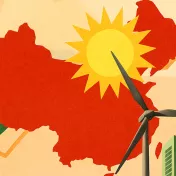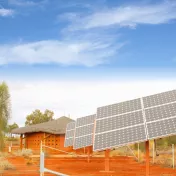As of 2019, in addition to ensuring food security, agriculture has contributed 15.9% to the Indian GDP and employed 42.3% of its population. Despite its high reliance on monsoons, agriculture continues to be the largest provider of livelihoods in rural India. India is among the top three producers of wheat, pulses, cotton, rice, fruits, vegetables and peanuts in the world. This translates to about USD 38.5 billion worth of agricultural and processed foods export to over 200 countries – making up for 12.6% of Indian exports. Despite the volatility of this sector, production of food grains in India has increased from 51 MT in 1950-51 to 252 MT in 2015-16. While agricultural yield has increased more than four folds since 1950-51, a simple global comparison of per hectare output shows that India holds immense potential for further increasing its yield. The top 5 states contributing to the country’s agricultural production are Uttar Pradesh (UP), Madhya Pradesh (MP), Punjab, Rajasthan and Haryana. Agriculture’s contribution to these states’ GDP range from 14% in Haryana to 45% in MP.
The Indian cropping season comprises of two cycles: Kharif (July-Oct) and Rabi (Oct-March). The Kharif cycle during southwest monsoons mainly includes rice, millet, oilseed, cereals, cotton etc., while the Rabi cycle during winter includes wheat, barley, pulses etc. Rice, one of the major crops of the country, is harvested through the states of Assam, West Bengal (WB), Orissa and Chhattisgarh in the east to Andhra Pradesh (AP) and Telangana in south and Bihar, UP and Punjab in the north. Wheat production is limited to western, north and central states of Gujarat, Rajasthan, Punjab, Haryana, Uttarakhand, UP, MP, Maharashtra, Bihar and WB. Some cash crops like sugarcane and cotton are widely harvested from states of UP, Punjab, Haryana, Gujarat, MP, Orissa, Maharashtra, AP, Karnataka and Tamil Nadu (TN). The production of others is more concentrated: Jute in WB, Assam and UP, tea in Assam and parts of Kerala and TN, coffee in Karnataka and rubber in Kerala and TN.
However, about a quarter of India’s land is drought prone which is directly linked to variations in monsoon. According to Indian Meteorological Department (IMD), 2010-19 has been the hottest decade with temperature 0.36°C higher than the long-term average, since it started recording data in 1901. Floods affect a smaller area, but are more destructive and are triggered by multiple causes from extremely high rainfall to cloud bursts and rise in water levels. Further, Indian coasts – especially eastern – witness cyclones that have been increasing in intensity over the years. Non-food grains like sugarcane and cotton have registered statistically significant decrease in production with any rise in maximum temperature. One of India’s key agrarian states, Punjab, saw a fall in rice and wheat productivity by 3% and 10% with an increase in minimum temperature from 1°C to 3°C respectively. Such studies have well-established Indian agriculture’s climate sensitivity thereby, linking climate change with agricultural productivity, food security and poverty.
After energy, agriculture – with a share of 16% – is the second largest GHG emitter in India. Methane release from cattle and livestock is the chief contributor, followed by rice cultivation and nitrous oxide from fertilizer use. The graph below shows that pan-India emissions from agriculture have been on a decline after peaking at 135 MtCO2e in 2011. Highly agrarian states of Uttar Pradesh and Punjab peaked their emissions at 19 MtCO2e and 6 MtCO2e in the year 2012.
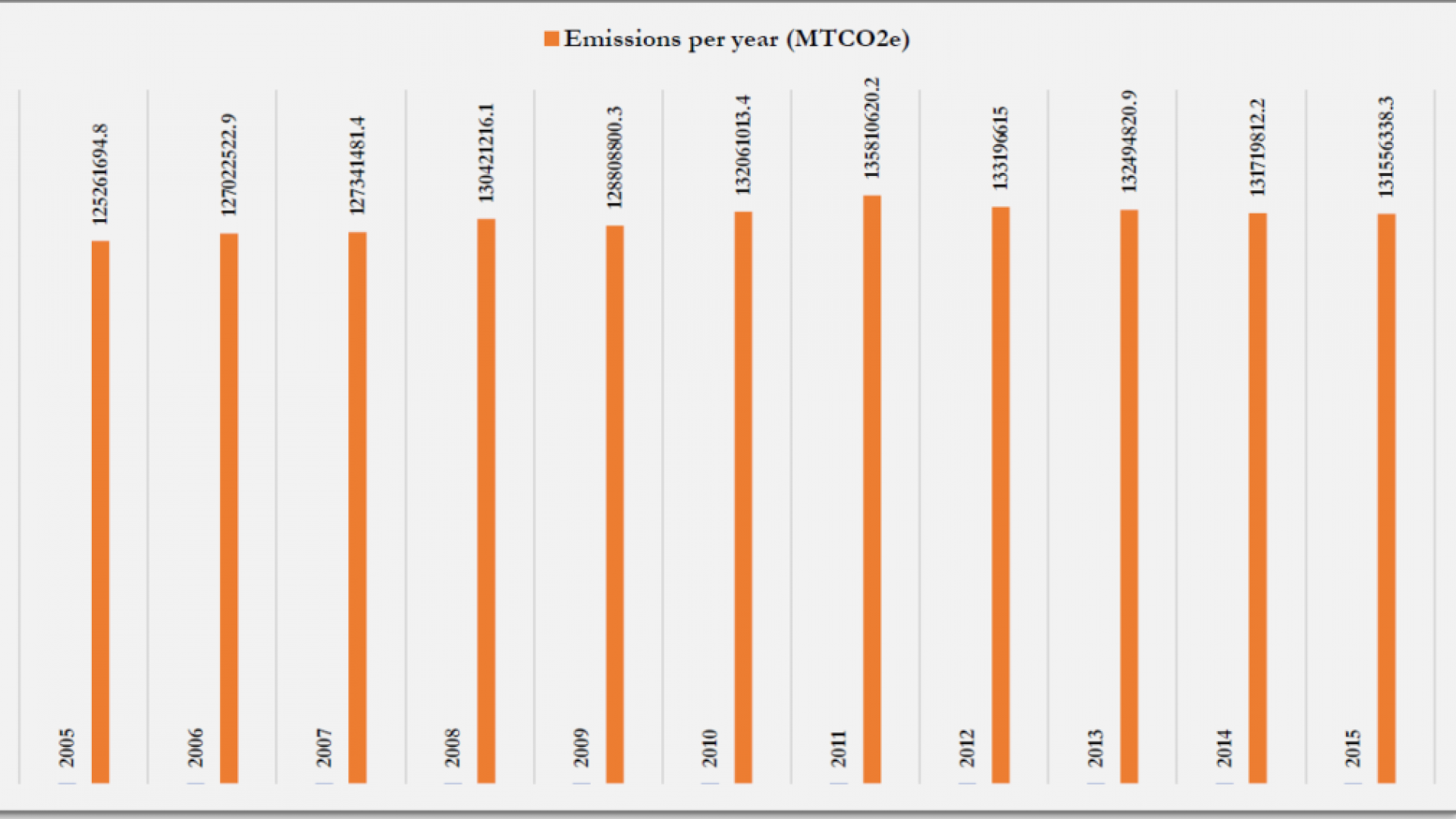
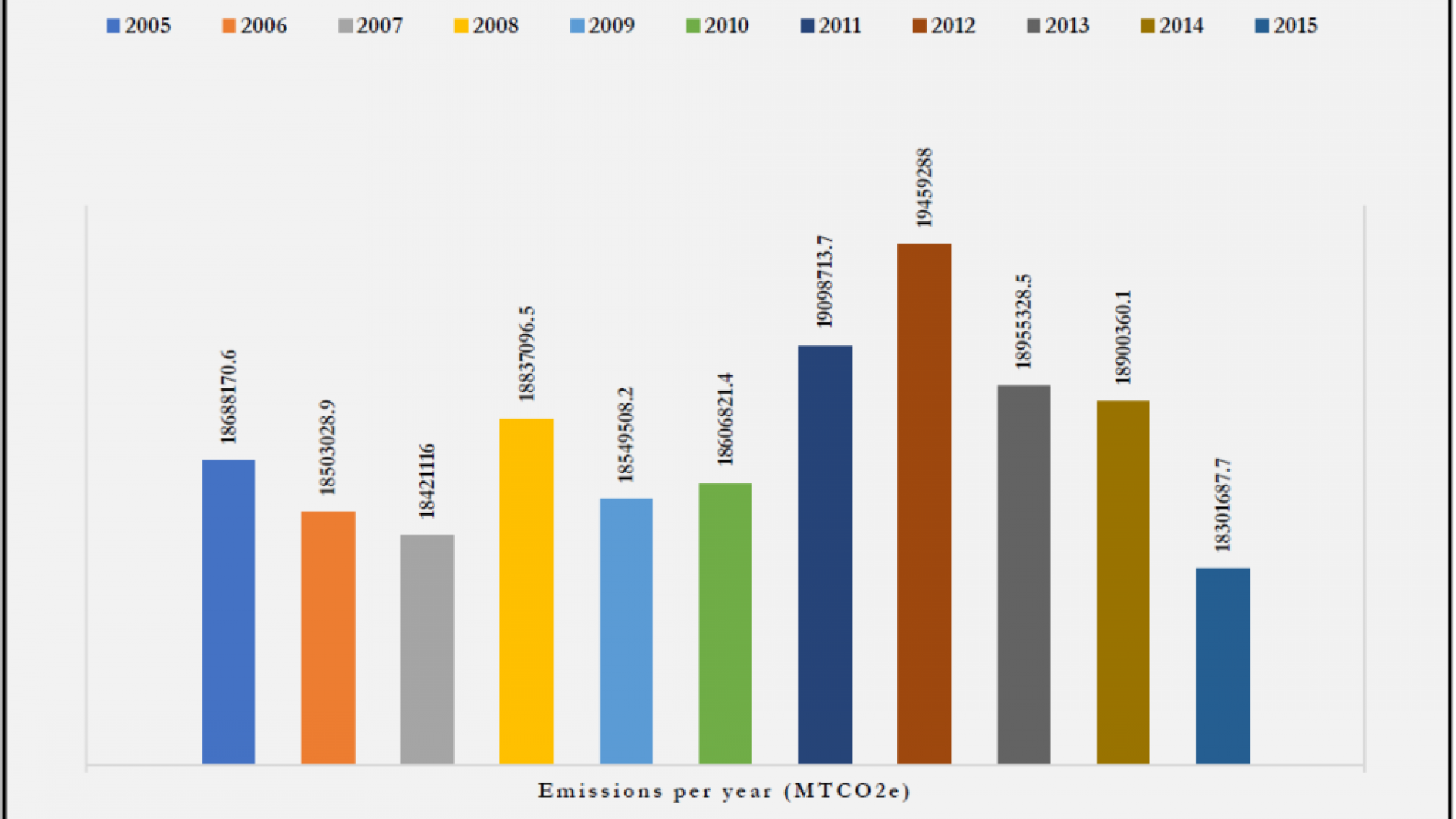
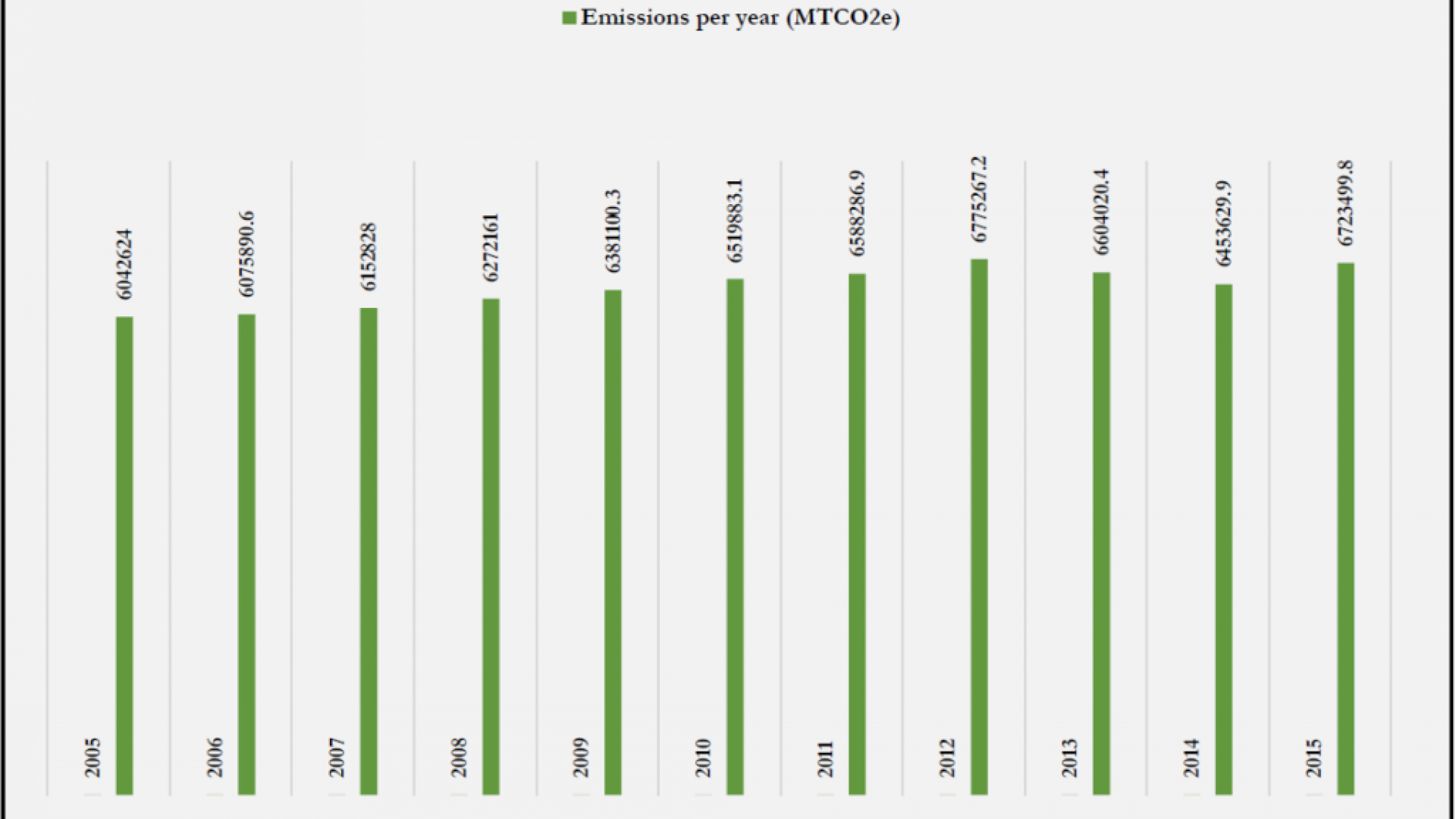
Despite a good season this year (2020), agricultural sector faced a huge setback with the announcement of a nationwide lockdown from 25th March. Agrarian states that employ migrant labourers in high numbers witnessed their mass exodus back to rural homes mostly in UP, Bihar, Rajasthan, MP and Odisha. Due to the scarcity of labour, agro-processing and support infrastructure industries were strained which in turn affected the supply chain and liquidity in this sector. Lockdown regulations in the transport sector exacerbated the situation by restricting the movement and thereby, sale of goods.
The sector now needs to incorporate green recovery to overcome these challenges as well as to replace previous unsustainable practices prevalent across states: Introduction of high-yielding variety (HYV) seeds has pumped up fertilizer consumption from 0.78 million tonnes in 1956-57 to 12.73 million tonnes in 1991-92. Further, 92% of the total water withdrawal of about 500 km3 was directed for irrigation in 1990. While the total withdrawal increased to 761 km3 in 2010, 91% of it was still being used only for irrigation purposes. Expensive chemical inputs affecting soil health, irrigation costs, low production from small land holdings, increased incidence of extreme weather events and lack of supply chains and markets continue to keep farmer incomes low. The situation has taken a dangerous turn with National Crime Records Bureau (NCRB) recording the highest number of farmer suicides in 2004 of 18,241. Even rich agrarian states like Punjab have seen more than a five-fold increase in farmer suicides. Cumulatively, they account for 11.2% of all suicides in India.
Due to this complexity and dependency, agriculture has been central to India’s development as well as climate agendas. In addition to climate adaptation through India’s NDC, the twin-objectives of food security enhancement and protection of natural resources are aimed at by National Mission on Sustainable Agriculture (NMSA). India has also launched National Initiative on Climate Resilient Agriculture (NICRA) and National Agroforestry Policy to emphasise on farm production, institutional management as well as minimisation of risk from climate events. India is also home to 30% of the world’s organic producers but accounts for only 2.5% of the total organic cultivation area of 57.8 million hectares. Other than through government policies, these efforts have also taken the shape of grassroot movements like Zero Budget Natural Farming (ZBNF). Highly conducive to small-scale farming prevalent throughout India, ZBNF has been adopted in India’s Union Budget 2019-2020.
In addition to the financial assistance provided through COVID-19 relief package, the government has announced major provisions for this sector. Firstly, absorption of workers into the local economy of states that witnessed reverse migration through National Rural Employment Guarantee Act (NREGA). Secondly, reforms in agricultural market through the passage of three ordinances. While this move expands farmer markets to help them realise a better price and eliminate middlemen, it has been criticised for falling short of safeguarding farmer interests and ensuring minimum prices to sustain the poorest of them. Overcoming shortfalls in Minimum Support Price (MSP) and Agricultural Produce Marketing Committees (APMC) while ensuring fair play to vulnerable farmers in an arena dominated by corporate giants, is the challenge Indian government needs to meet.
State efforts have harmonised agricultural needs with renewable energy (RE) through schemes like PM KUSUM and Scale Up of Access to Clean Energy for Rural Productive Uses. However, their uptake has been restricted to wealthy farmers as installations require high capital input or the ability to lease land for 25 years. Informing policies to give agriculture and water a central role in the context of promoting RE is crucial. Moreover, with no prescribed limit to water use, on-grid pumps like off-grid ones, have allowed over-extraction of groundwater. Thus, in addition to and synergy with the RE push, principles of agroecology rooted in traditional Indian farming through ZBNF need to be vastly adopted. Indo-German initiatives expanding its reach can facilitate all three aspects of sustainability through enhancing productivity of even small farmers, conserving resources like water and soil as well as reducing input costs. Governments stand to massively advance in meeting global mitigation targets from investing in such initiatives as they bring together remote geographies with diverse livelihoods by means of clean energy, on one hand and reduce fertiliser-induced emissions, on the other.
India is globally the largest producer of millets despite their fall in share of total food grain production from 22.1% in 1950-51 – before the Green Revolution – to 6.9% in 2011-12. However, millets have recently witnessed a comeback, owing to a healthier shift in urban consumption patterns. In order to promote climate resilient crops and a healthy diet, it has been promoted by declaring 2018 as the National Year of Millets and other initiatives led by civil society and National Bank for Agriculture and Rural Development (NABARD). However, their growth faces technical challenges from the absence of value-additions and markets. Indo-German partnership can adopt the goal of building climate-sensitive crop supply chains up to international borders.
Additionally, Indian agriculture needs immediate resilience measures that protect it from extreme weather events. The Prime Minister Crop Insurance Scheme has made considerable progress in this regard. However, to extend its coverage, the state needs to look beyond commercial feasibility and introduce flexibility that covers extreme events like hailstorms. Further, operational challenges like surge in complaints and litigation, misinformation/confusion about the schemes and delays in payments need overcoming for the policy’s effective implementation. With plans to advance GIS and remote sensing in this matter, investment into developing weather stations to better assess crop loss and yield is essential for truly realising farmer losses with growing climate change events. At the 41st G7 Summit, BMZ announced its ‘aim of uplifting 500 million people out of hunger and malnutrition by 2030’. With international objectives aligning with domestic plans, 159.7 ma ha of India’s arable land that is second-largest in the world, can be the synergising ground for attaining food security and fighting climate change.
This blog post first appeared on 12/16/2020 on the website of our partner, the Vasudha Foundation and is part of a joint blog post series on Green and Resilient Recovery in India:
Read the other blog posts on this topic:



